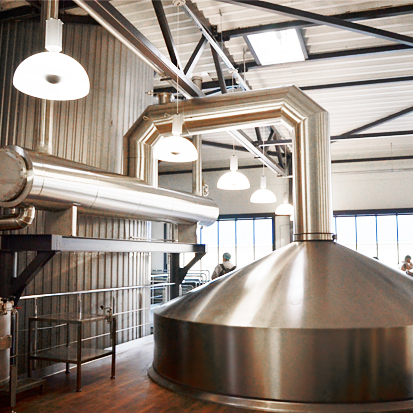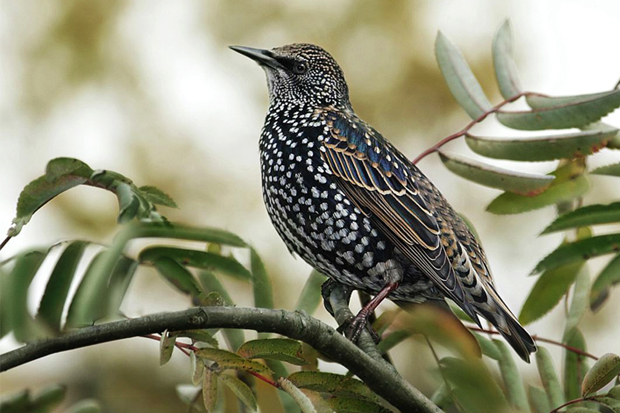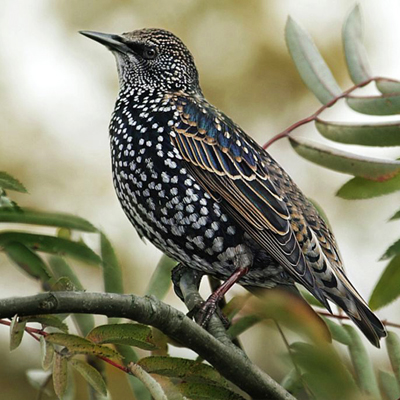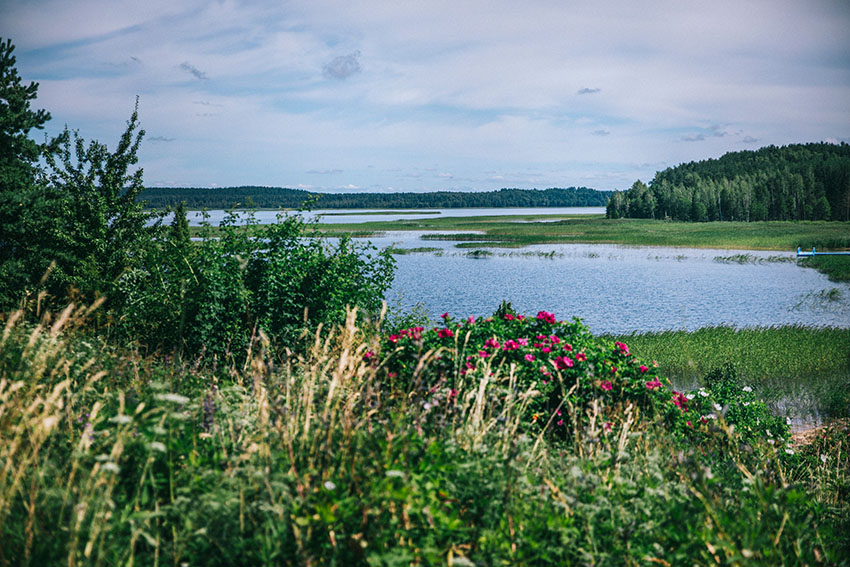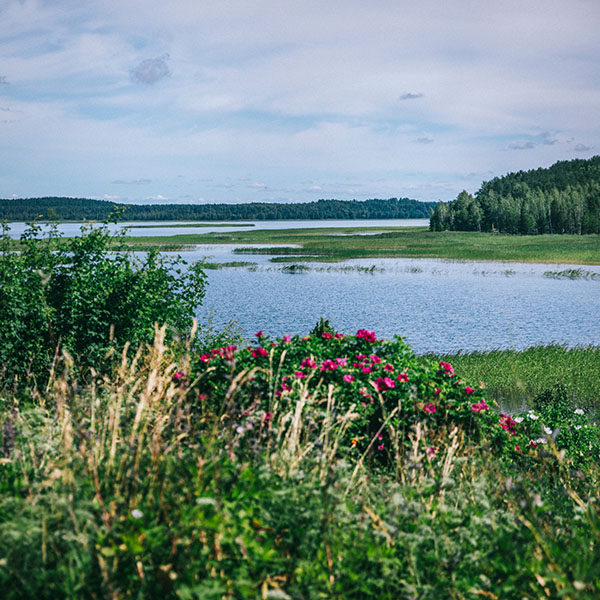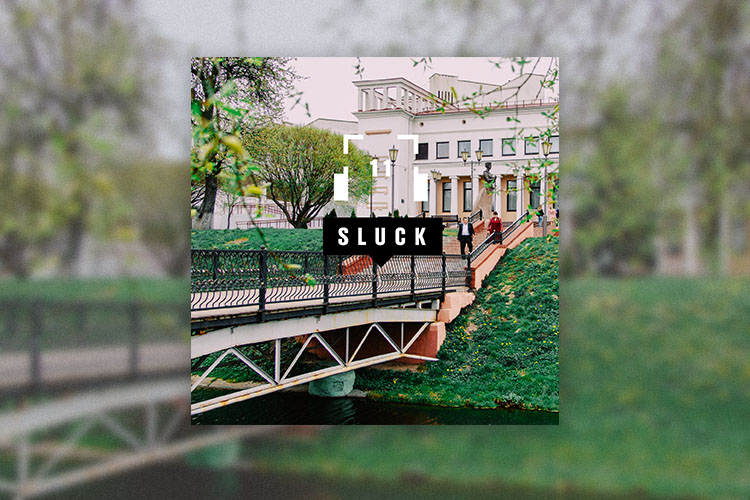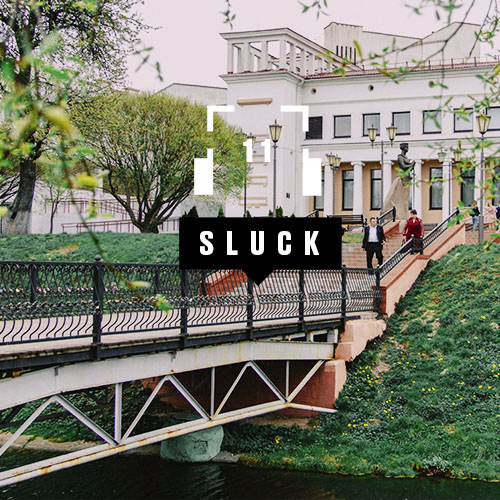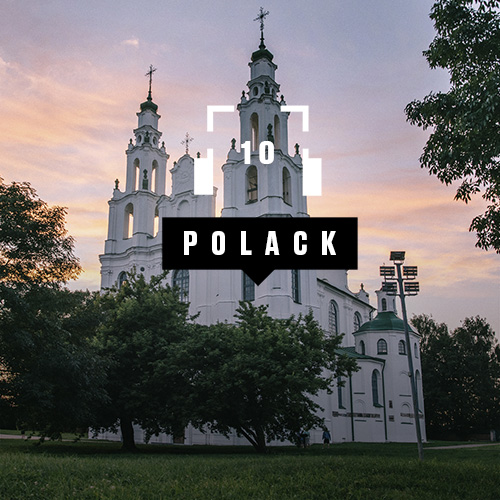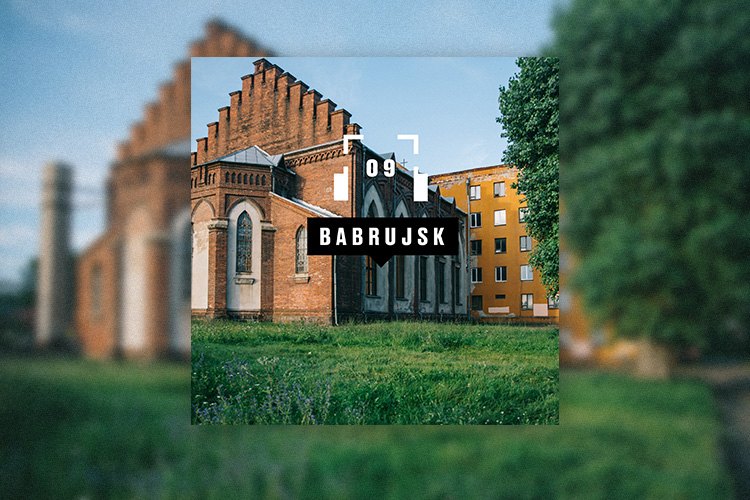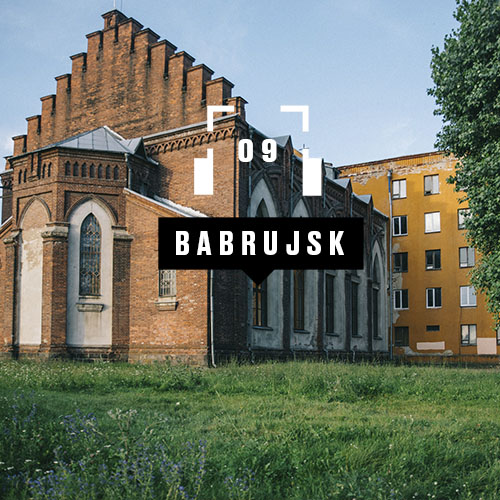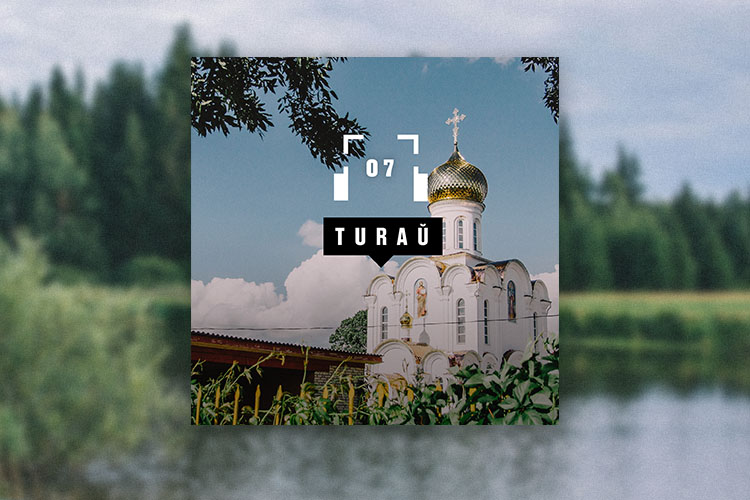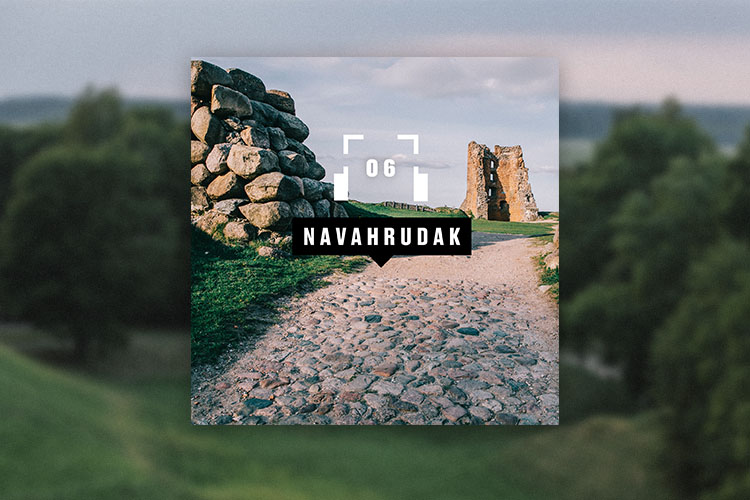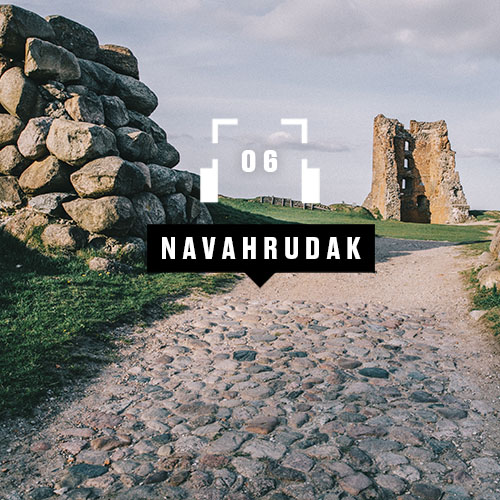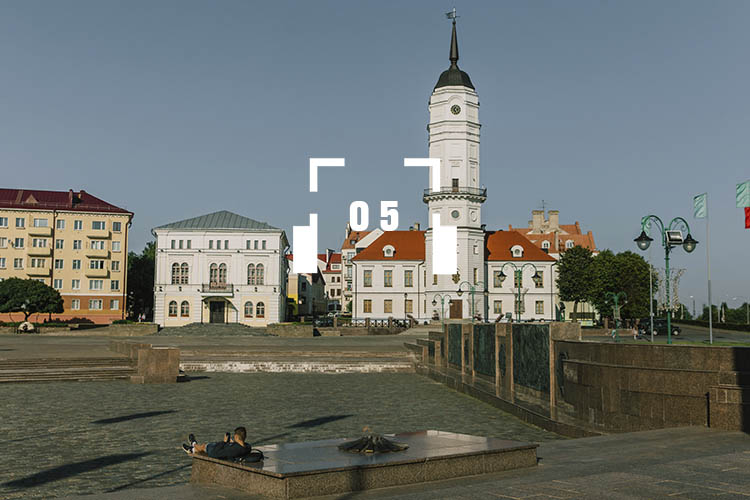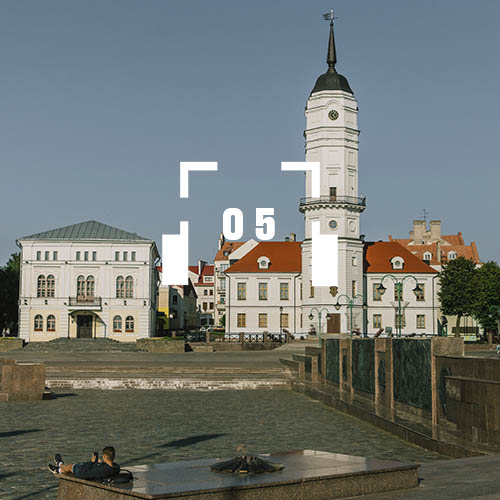3 routes to discover Belarus with fully supported bike tour
With the possibility of 5 visa-free days of traveling, Belarus is being transformed from terra incognita into an attractive and accessible destination. Locals say that the real Belarus begins only when you leave the city behind. Outside Minsk, you will find untouched nature, hospitable people, and historical relics. Many of the destinations can be easily reached by bicycle – bike tourism is slowly but steadily becoming popular here. Together with the pioneers of fully supported bike tourism in Belarus, Biketours.by, we suggest you 3 reliable routes perfect for 2 days getaway. Risky guys can travel on their own, but for the perfect combination of adventure and comfort you can get your fully supported bike tour.

How do fully supported bike tours work in Belarus?
Fully supported bike tours in Belarus work just the same way as in any other country in the world. You choose your route and the team takes care of all the rest. You will get a well-maintained bike, mainly with hydraulic disc brakes, accommodation and meals (mostly local foods, including vegetarian options, not an easy get outside Minsk), on-the-road bike repairs or a replacement bike if anything goes wrong and the transportation of your luggage. You will also get any necessary tickets to public transport or historical sights and an English speaking guide – a very important point since not many people in Belarus speak English fluently. The price for the tour will be € 200-300 – which is quite a deal in comparison with European prices. If you are up to something special, you can always get a private tour to the places that would be interesting exactly for you.
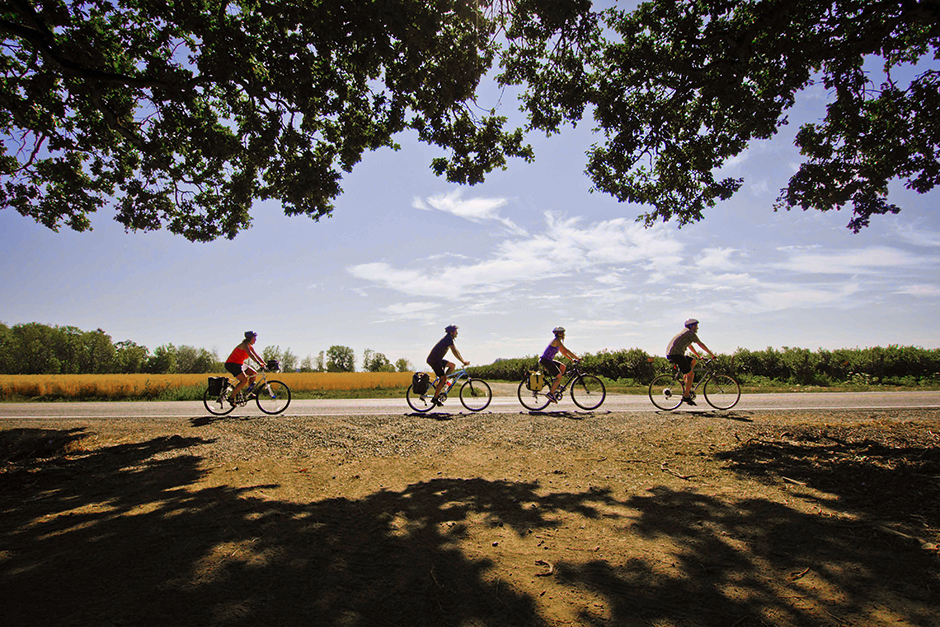

Why is Belarus a good place for a bike tour?
Belarus doesn’t have very intensive car traffic yet, so you can enjoy its vast spaces without many signs of human existence. The land in Belarus is not private property, which means that you can freely travel through its pristine forests, vast fields with crops from collective farms (and without any fences) and small car-free villages. On the other hand, the forests and fields often have paths that are not marked on the maps, and it can be challenging to find a place for a tent, that is why touring with a guide might be a good idea.
The villages are definitely the experience you should get (and there is no way to get it from the car): yellow and green wooden houses, big old trees with storks’ nests, magnificent flower gardens and hospitable old people who are eager to communicate with any newcomers (regardless the language barrier). During the tour, you will be in a diverse group of participants – together with some locals who are willing to practice their English, so the feeling of comradery during the trip is inevitable. While traveling by bike you discover the country first hand – and it has many sights to offer.
To give you a taste of how a bike tour in Belarus can look like we suggest you 3 routes from Biketours.by resources.



Route 1. Minsk – Maladzechna – Vileyka – Vileyka Water Reservoir
 Maladzechna
Maladzechna
You can easily get from Minsk to Maladzechna by train. Unlike many other towns and villages in Belarus that have a completely identical set of street names (Soviet time heritage – Lenina, Dziaržynskaha and Kamsamolskaia streets) Maladzechna has honoured true heroes of Belarusian history. Here you will bike along the streets named after Ihnat Bujnicky (the founder of Belarusian professional theatre), artist and astronomer Jazep Drazdovich and the Commander of the army of Great Dutchy of Lithuania Kanstancin Astrožski. Go along Vialiki Hasciniec street, pass Central Square, take a moment near the fountain with sculptures (they were criticized for being too erotic). You can also find here a ghost of a railway track that was built along the square in 1944 when the regular railway was bombed. On one of the buildings (Prytyckaha, 67) you can still see the railway symbols: gear wheel and an adjustable wrench.
Don’t miss Pieramohy Park (Victory Park) with artificial lakes that were made from a nameless spring. Here you can eat some ice-cream and stride the path with the emblems of Belarusian towns. Two other points worth your visit are beautiful Saint Kazimir church (Vialiki Hasciniec str.) and the World War II memorial Shtalag-342, which used to be a concentration camp (Zamkavaja str).
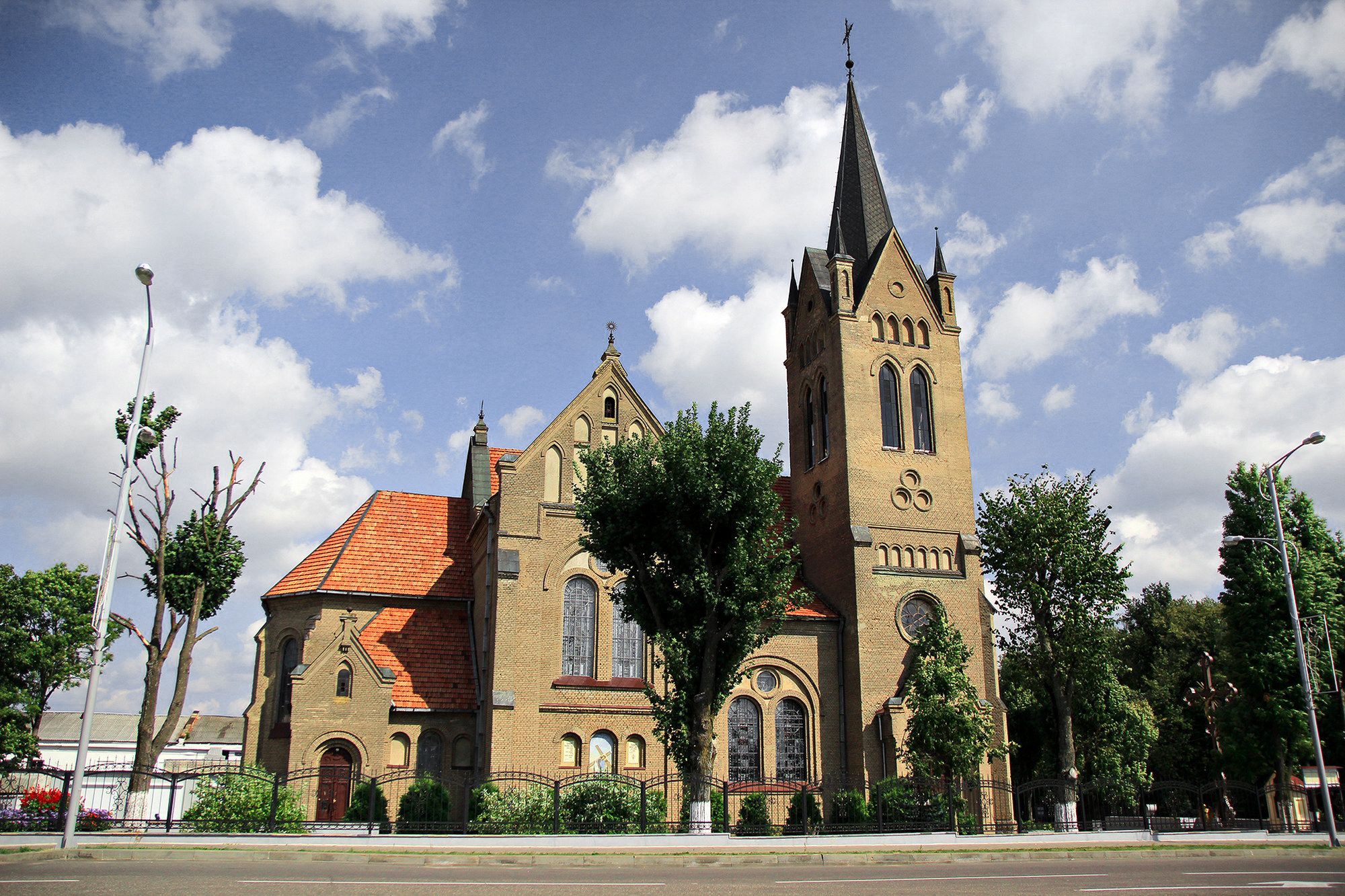
 Vileyka
Vileyka
Vileyka was first mentioned in 1460. The main points of interest are in Lenina Square: a beautiful catholic Church of Exaltation of the Holy Cross that combines features of neogothic and neoroman styles (built in 1906) and Orthodox Church of Saint Mary of Egypt (built in 1865, pay attention to the nice round window and the clock). The third member of the historical collection on the square is the monument to Lenin himself – multiculturalism as it is.
 Vileyka Water Reservoir
Vileyka Water Reservoir
Vilejka Water Reservoir is the largest artificial lake in Belarus (and second in size to the largest natural lake Narach). It was constructed in 1968 – 1975 to provide fresh water for fast growing Minsk. The Viliya river was dammed, and some 9 villages were resettled (along with thousands of graves). Locals come here for fishing, sailing or just getting a few hours of meditation. Cycle around the reservoir and find your own spot. Some people say that here you can get the best sunset views in the whole country.
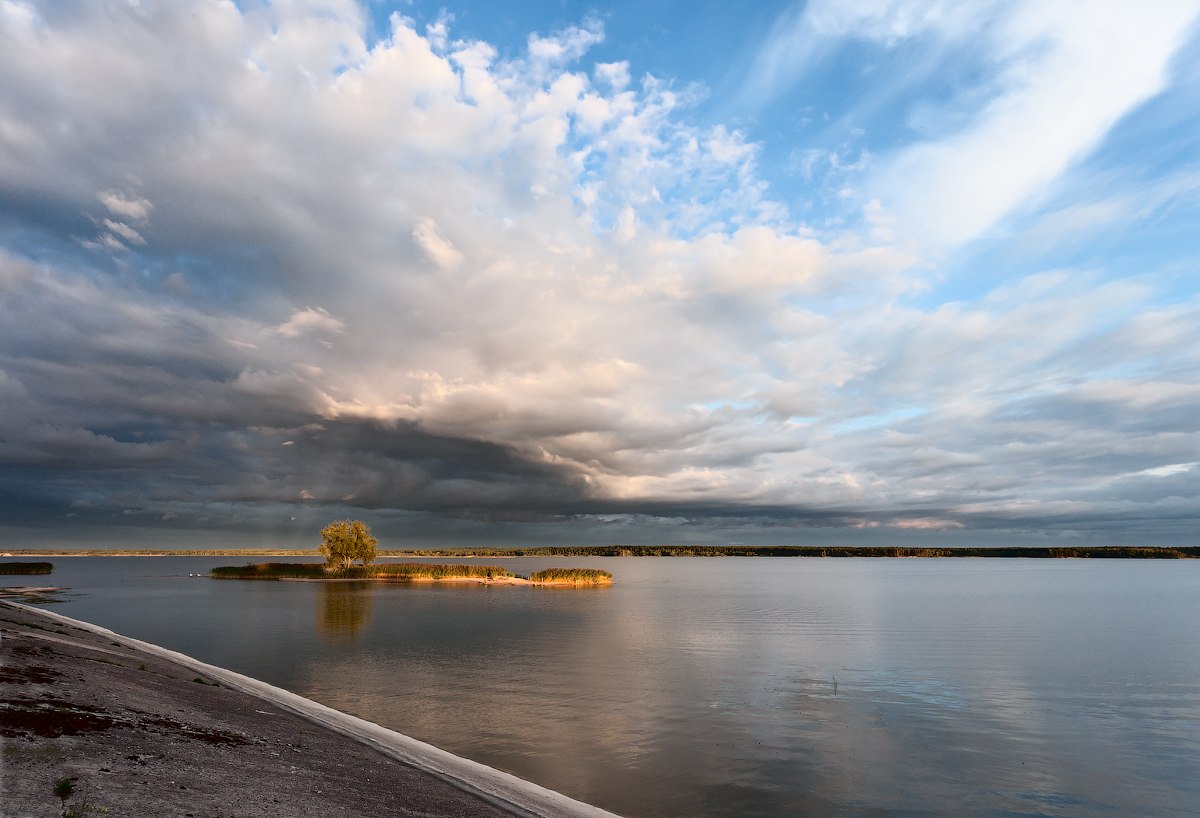


Route 2. Smarhon – Chusovaya – Soly – Herviaty – Dubok – Zhuprany – (Bonus) Zhodishky
 Smarhon
Smarhon
Smarhon is a small town in Hrodna region of Belarus, established in the early XVII century – back in the times of Great Duchy of Lithuania. Until the middle of the XIX century, Smarhon has been the property of the most famous noble family of Belarusian aristocracy – Radziwills. They even founded a bear training school here – Smarhon Bear Academy!
Take a look at the Church of St. Michael the Archangel. Built in 1606 – 1612 as a Calvinist church it is the original monument of Renaissance architecture. The dome was painted by a Belarusian artist Petr Sergievich. Legend says that the underground passage runs from the church to Vilnius. During soviet times the building of the church hosted a local shop and now has returned Catholic Church.
 Zhuprany
Zhuprany
In this village take your time to admire a beautiful neogothic Church of Saint Peter and Paul. There was a wooden temple in this place already in 1550, but it was replaced with the red brick church in 1854 – 1875. Žhuprany has also been in the possession of Radzivill family, many of whom were Calvinists at that time – so the church was Calvinist as well. In XIX century the village passed to Chapsky family, who began the construction of the stone church. The process was interrupted by the outbreak of the 1863 rebellion, and the construction of the church was finished only in 1875. This is a special place for people who honor Belarusian literature because behind the church there is the grave of Francišak Bahuševič, one of the founders of modern Belarusian literature.

 Chusovaya
Chusovaya
Obsessed with leading in Cold War the Soviet Union comradeship has built multiple military objects on Belarusian territory as the Western Gate of the country. One of them was ‘Chusovaya’ - the place for the underground stationing of the nuclear missile ready to set off to any NATO target in Western Europe. Thankfully none of them has ever been launched. The rockets are now destroyed but the stations and the huge missile silos 24 meters deep are still hidden in Belarusian forests.
 Soly
Soly
The main point of interest in Soly is the rare and extraordinary Church of Mary of the Rosary in art-nouveau style. The church was built in this place in 1589 originally and rebuilt in 1934. Frescoes inside are also extraordinary: they are dedicated to the defense of Czestochowa and the miracle on Vistula. After the visit to the church don’t forget to take a look at an old Jewish cemetery and then take a moment to enjoy the view of Ashmianka river.
 Herviaty
Herviaty
Many consider Holy Trinity Church in this village the most beautiful in Belarus – and for a reason! It’s the highest cathedral in Belarus – 61 m (equivalent to 24-storeyed building!) and the only one created according to all the neogothic canons. It was erected at the site of a wooden church of the XVI century. A brick manufacture was built there deliberately to supply the construction of the church. Fun fact: during the construction chicken eggs were collected from all over the neighborhood (they were necessary for the grout to make it stronger). The slate was brought from Germany. Here you can see the arc-boutant. It’s a semi-arch that distributes pressure from the main wall and stands separately (remember Notre-Dame de Paris), which is not typical for Belarus. Make sure to attend the service, it’s in Belarusian, Polish and Lithuanian, and go for a walk in the park with sculptures. You can also visit a water mill in fachwerk style (again a rare occasion for Belarus!) nearby. It was working and producing electricity until World War II, was restored in 1980s and now you can even drink a cup of coffee there!
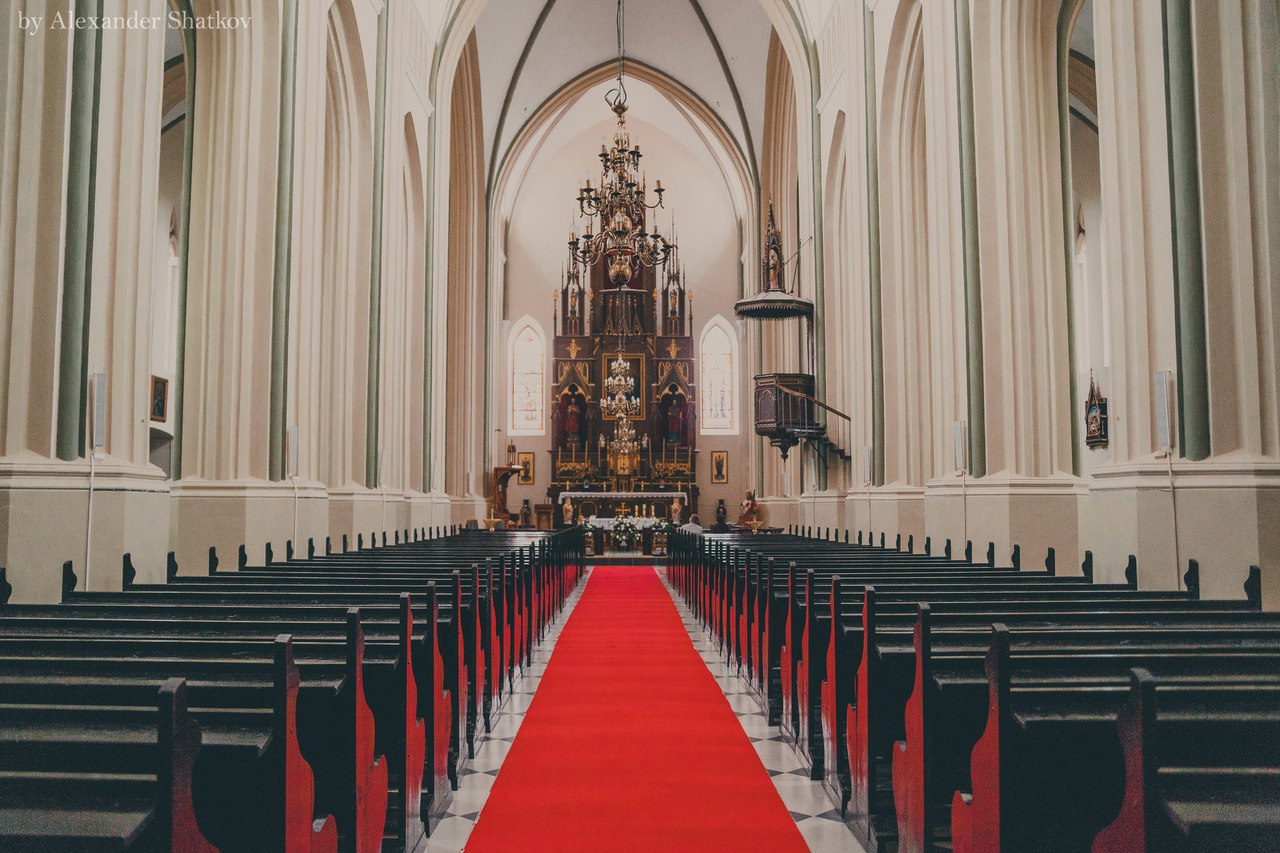
 Dubok
Dubok
There's no highway leading to Dubok. Reachable only by bike this village preserves a unique example of wood and stone mixture in a single building of sacral architecture. The chapel with the moss covered gateway and a burial vault appeared by the river Vilia in 1928. 7 years after, 7 gates that symbolize the sacred procession have been erected around the chapel.
 Zhodishky
Zhodishky
This village lies a little bit off the route. Consider going there if you're yet lacking adventures. While in this village, take a look at an austere building of Holy Trinity Church (Pervamajskaia str., 2). It was built in the XVII century and rebuilt two centuries later. Simple and stern lines of this building have the simple reasoning behind them – the church was constructed according to ascetic principles of Calvinism. The other noteworthy buildings in Zhodishky are the XIX century distillery, water mill, and old Catholic cemetery.
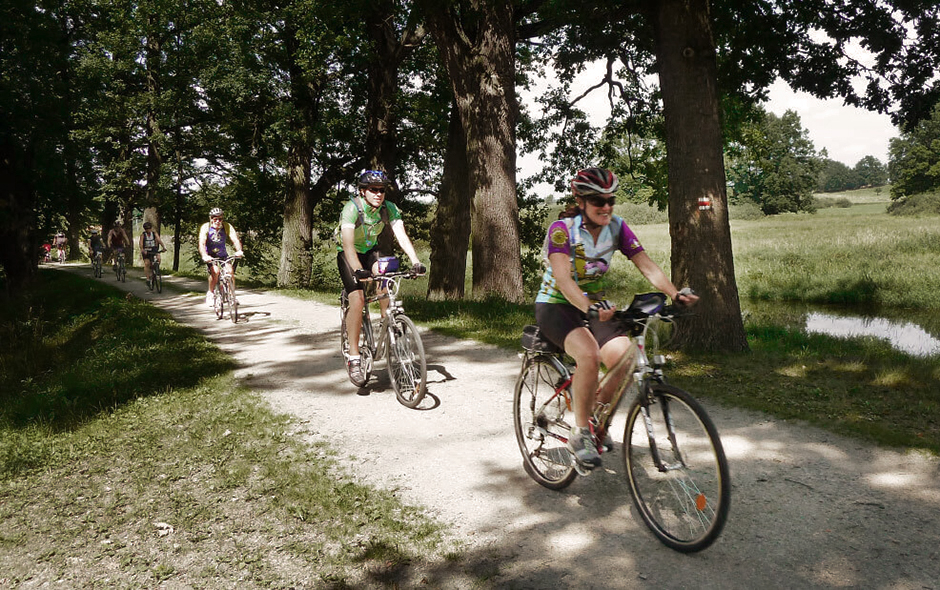


Route 3. Ivatsevichi – Kosava – Ruzhany – Varanilavichy
 Ivatsevichi
Ivatsevichi
Start your route in Ivatsevichi, which you can easily reach by train. Your next point will be in Kosava, but on your way, 1 km to the north from the town, you can take a look at an interesting object: a station of Struve Geodetic Arc. It’s the biggest instrument for the first accurate measurement of a meridian and a real monument for the scientific and technical progress of the XIX century. The chain was established by the German-Russian scientist Struve. The construction took 40 years, 265 triangulation stations and 10 European countries to build it. In Belarus you can find the biggest number of the stations preserved – 19 to be exact (and they are on UNESCO World Heritage list).

 Kosava
Kosava
In Kosava you can take your time to admire Puslowski Castle built in Gothic Revival style. It didn’t look typical for Belarus in the early XIX century, when it was built, and neither does it now. The castle was built by Kazimir Puslowski, but his grandson Leon recklessly gambled it away. The building was burnt during the war. A massive building has 12 towers: one for each month of the year. Summer towers are in the middle and they stand for the richest months (from May till August). Switch on your imagination (the castle interiors haven’t been preserved) and make a mind journey through the Black Room for card games, the White Room faced with marble for fancy parties and the Pink one for concerts. There were 132 rooms here, some of them with glass floor with aquarium full of fish underneath. Again some legends say that there were underground passages big enough for a carriage to go in them. Also as in Kosava, pay a visit to the nearby museum of Tadeusz Kasciuszko, military engineer and national hero of four countries: Belarus, Poland, Lithuania and, surprisingly, United States.
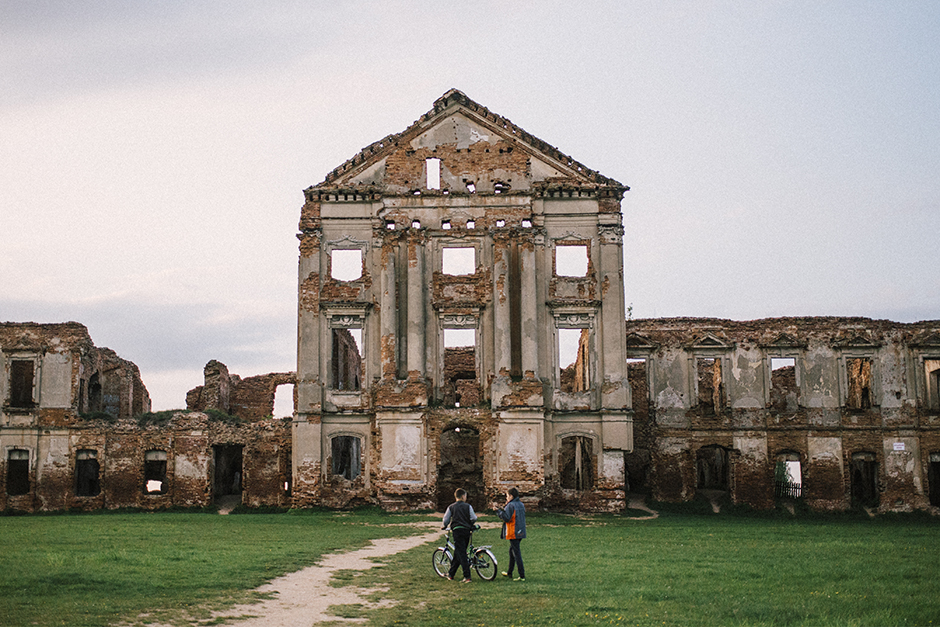
 Ruzhany
Ruzhany
Some call the castle ruins ‘Belarusian Versailles’, but it’s not spectacular views or glamorous interiors that you should come here for (there is not so much of them left), but the strong energy of the place which looks magnificent even in ruins. Just imagine: the castle was founded in the beginning of the XVII century and the chancellor of the Grand Duchy of Lithuania Lew Sapieha was dwelling here. So as to make life there not only comfortable, but also secure, three massive defensive towers were added to the complex. Important state issues were discussed in here, noble families used to organize balls on the site, and the whole Sapieha’s archive and the state treasury were kept in the castle. After the uprising of 1831 was defeated, the Sapiehas left the residence and the castle turned into a textile factory. During World War I burnt and after World War the idea of restoration was forgotten completely.
Now you can drop by the museum (Urbanovicha str. 15а) and learn the history of the place: there are 4 rooms and the guided tour at your disposal. Another point of interest here is the Church of Holy Trinity (Pervamajskaia str. 12) built in 1617 in Barocco style (which was changed to classicism after restoration) and the Orthodox Church of Saint Peter and Paul (17th September square) – Barocco again but from the year 1778.
After so intensive cultural program you can take a break and have a picnic at lake Papernia and Zelvianka river. Then, while passing Varanilavichy village, drop by and take a look at Saint Vladimir church. After that through forests, meadows and small villages of Zapolje and Hosheva return to Ivatsevichi.

All these trips, as amazing as they are, can be quite demanding in planning – Belarus is only learning how to take care of foreign tourists. If you want everything to run smoothly consider going with Biketours.by. These guys are passionate cyclists in love with Belarus, so they will do their best to get you to nice places to eat and sleep and provide help if anything goes wrong. Take the advantage of it!
Фото - palasatka, Александр Шатков
ЗАО "Байктурс"
УНП 192767958


